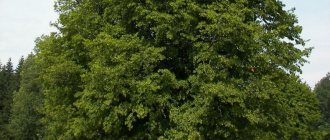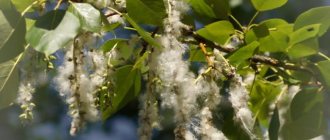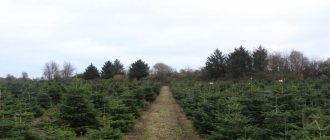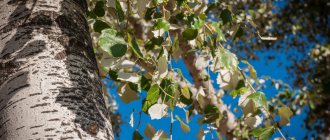The topic of today's article will be walnut wood. We will talk about the main types, principles of operation and coating for this type of wood.
Woodworkers often have favorite types of wood that they prefer to work with. Just like auto mechanics. Those who prefer to work with cars of certain brands and models. In many ways, it all depends on habit and subjective preferences. It often turns out that a carpenter gets high-quality results with one type of wood and does not even try to work with other types of wood.
Each type of wood has its own characteristics. And each of them involves its own operating technology. Which the master ultimately adheres to. This is especially evident at the coating stage. Thus, maple can be very capricious when applying coating. It is also quite susceptible to seasonal fluctuations in humidity and, as a result, expansion and contraction.
When working with oak, tools can become dull quite quickly. As a result, the wood can tear, flake, and char if you don't run the piece through the tool quickly enough. In addition, the appearance of treated oak wood is very dependent on how the tree was cut.
Cherry requires gentle handling rather than brute force. Then this material allows you to get a high-quality result. Additionally, choosing multiple boards of the same color can be a challenge.
Poplar is excellent for most standard tasks and at the same time works well with paint. However, this type of wood is difficult to stain.
Exotic varieties such as Brazil nuts can cause respiratory problems if wood dust enters the lungs. And tropical woods should be avoided altogether.
And so, walnut wood.
General information
Rock properties
In addition to its fruits, which people love to eat, walnuts are very valuable due to the unique properties of wood.
Wood properties:
Strength. The stocks and stocks of military hunting rifles can be considered the best if they are made of walnut wood. Even in mass production, the best type of wood for making weapons is considered to be walnut, in particular walnut, because its trees can form trunks with a diameter of up to 1 meter or more, while the wood is of uniform quality.- Ease of processing. Engravers and wood carvers have long noted the fact that walnut wood is the best of those that hold a carving (carving pine is much easier, but the shape will not be preserved), and boxwood retains its shape for a century, but it can be processed as hard as granite or bronze. Walnut is the best option.
- Decorative. Walnut wood is light, patterned in the cut, and also very durable, but easy to carve.
Helpful advice! There is no mass harvesting of walnut wood (and in European countries it is completely prohibited), so such raw materials are very valuable among carpenters and joiners due to their rarity. The harvest can only be obtained through sanitary and preventive felling.
Where does it grow and its birthplace?
Over the entire period of cultivation, it is impossible to accurately determine the first country where this type of nut originates. In a warm climate, the nut begins to spread very quickly with the help of animals and birds - and up to the latitude of Voronezh it is already considered a weed tree that grows naturally. But in fact, in the natural environment, such a tree grows in the Caucasus, as well as in Transcaucasia and further south. Wild groves can be found in Greece (where, in fact, the name comes from), as well as in Central Asia and Iran.
The first mention of such a plant was found in Mesopotamia (at that time this place was called Mesopotamia, and according to the current geographical map we are talking about the territory of Kuwait and Iraq), but the nut received special fame in Greece (in particular in the Greek colonies in Asia Minor and in the Middle East). It was thanks to the Byzantines and Greeks, with whom our ancestors contacted, fought and traded, that the walnut came to the territory of the CIS and Russia in particular.
In Europe, and especially in the Mediterranean countries, the walnut became famous thanks to contacts both with the Byzantines and Greeks, and with the Persians, and directly. Apparently, in today's Iran, for the first time, through selection, it was possible to increase the size of the fruit several times - wild-growing nuts of this type usually produce fruits the size of an oak acorn). By the way, in Russia the fruits of the tree were called royal, Greek or Volosh nuts.
The name “royal” is understandable, because walnuts are much tastier and larger than ordinary hazel, which grew on the banks of lakes and rivers. As for “Voloshsky,” the name comes from the words “Volokh,” because that’s what Moldovans and Romanians were called, and a little later the Italians and Spaniards with their Romance language.
The walnut took root in the Romance-speaking southern Mediterranean and southern Europe. At the moment, such plants have spread throughout South-Eastern and Southern Europe. And although the main habitat and production area remains the Caucasus and the Mediterranean, in the wild, such nuts have already reached Voronezh due to global warming and are moving further even without the help of breeders. Note that in the late 1980s it was impossible to find such a plant north of Donetsk (Donetsk region, Ukraine), but now no one is surprised by this tree near Tambov.
Cashew
Despite their delicate and buttery taste, cashews contain much less fat than walnuts or peanuts. However, this is a fairly high-calorie product. It is an excellent source of unsaturated fatty acids, which play a very important role in normal heart function and help reduce cholesterol levels. They have an antibacterial and tonic effect. Helps reduce the likelihood of caries and gum inflammation.
Interesting facts about walnuts
We invite you to consider the most unusual and interesting facts that you definitely haven’t heard about before:
- Due to the fact that walnuts are shaped like the human brain, people have often concluded that they are good for memory. In fact, such a nut is no healthier than hazel or other nuts, but a mixture of walnuts and honey really helps stimulate memory.
- In terms of the amount of vegetable protein, walnuts are definitely unrivaled, and for this reason, for vegetarians who, out of principle or personal reasons, do not eat animal protein, walnuts will be a real salvation.
Interestingly, walnuts are very useful for potency. Moreover, it (unlike dill or other herbs) is universal, namely, it acts on women and men, and normalizes the hormonal cycle.
- This nut is the richest plant product in terms of nutritional composition.
During the Soviet era, on April 1, an article was published in a popular science magazine stating that walnut fruits are not plants, but a parallel intelligent species of animals on Earth that live in symbiosis with trees. Scientists didn’t even think that they would be taken seriously, but believe me, even now you can find stories about “intelligent nuts” on the Internet.- In the Caucasus, this nut is considered a sacred tree, and it is there that you can find trees that are more than four hundred years old.
- Only 0.4 kg of walnuts will satisfy your daily food requirement, and at the same time you will receive food that is fully rich in all the necessary vitamins and elements.
- Experts recommend eating no more than 0.1 kg of walnuts per day, because if you eat such concentrated food excessively, your tonsils may become enlarged, a rash may appear in your mouth, and headaches and vascular spasms may begin.
- If you burn a walnut shell, you can prepare high-quality activated carbon.
You can get the maximum benefit from the nut if you chew it as long and thoroughly as possible. Only from a completely crushed nut kernel is the human body able to obtain the maximum number of useful substances.
- One healthy and mature tree can produce up to 300 kg of nutritious and healthy fruits per year.
- There are 21 types of walnuts in the world.
- By the way, Renaissance artists used walnut oil as a base for creating oil paint. In one of the manuscripts of Leonardo Da Vinci, a recipe for paints was found, which the master made with his own hands.
- Unripe nut fruits are often used to prepare vitamin concentrate, and at home they are used to make healthy and tasty jam.
- The hardness of the burl is several times higher than that of other parts of walnut, because the fibers in it are entangled and firmly bonded, so previously not only pieces of furniture, but even carriages were made from wood.
As you can see, this is a unique tree that pleases with its beauty, as well as a lot of useful properties.
What is solid walnut furniture?
Various furniture is made from solid walnut wood - beds, cabinets, chests of drawers, cabinets, tables, etc. A bed made of solid walnut is safe for health, as comfortable as possible for sleeping, and therefore it will be appropriate in any bedroom, even a child’s. In the kitchen, solid walnut furniture will delight family evenings with its beauty and elegance. What sets it apart is its classic performance style. Thanks to walnut furniture, the interior of your home will be filled with comfort and warmth.
Solid wood is always preferable to products made from compressed wood waste (MDF and chipboard). The array is of much higher quality, looks natural and fits into any interior. Such furniture can be passed on from generation to generation, which only increases its value.
This is an environmentally friendly material that, under the influence of external factors, will not emit toxic and other harmful substances hazardous to health. The specificity of the array guarantees increased strength compared to other materials. It retains heat perfectly, which has a beneficial effect on the indoor climate.
To save money, you can order walnut-colored solid wood furniture from, avoiding store markups.
Upholstered furniture made from solid walnut will also be durable.
Remember these three main factors before you decide to buy walnut furniture:
- Durability – reliability and resistance to various types of mechanical damage are comparable to oak and beech.
- Flexibility and pliability in processing - solid walnut furniture can be produced with carved inserts and uniquely curved elements.
- Light weight - not every type of solid wood can boast of lightness, which cannot be said about walnut. Such furniture is easy to handle and transport.
Look at the photo of walnut-colored furniture for design inspiration:
Almond
It is believed that the amount of proteins and carbohydrates in almonds is perfectly balanced, so it is recommended both in dietary nutrition and for the prevention of many diseases. Contains a huge amount of monosaturated fats that help reduce cholesterol in the blood. Rich in vitamins and microelements. A larger amount of useful substances is found in the skin or layers located closer to it, so nuts are recommended for consumption together with the shell. Their consumption stimulates the process of regeneration of body cells and helps strengthen bone tissue. Indispensable for inflammatory diseases. Helps with migraines, insomnia and nervous disorders.
Chestnut
This tree fruit contains a whole range of essential minerals, vitamins and ash substances. However, it contains starch, so it is not recommended for weight loss diets. Chestnut nuts are very respected among people not only for their amazing taste. They are an indispensable raw material in traditional medicine: in pharmacology they are used as raw material for the production of medicines and cosmetics. In folk methods of treatment, healing decoctions, infusions and ointments are prepared on its basis for the treatment of almost any disease.
Macadamia
This nut has almost everything “very best”:
- hard shell;
- calorie content;
- price.
We are talking about the Australian nut, or macadamia. A tree with smooth oblong leathery leaves grows up to 15 m in height.
Cream-colored spike-shaped inflorescences up to 30 cm long give life to round fruits with a cone-shaped crown up to 4 cm in diameter. Under the soft green and hard dark shell hides a white or light beige core up to 2 cm in diameter with a slight vanilla scent.
The homeland of macadamia is Australia; now there are plantations of this nut on all continents. For comfortable growth of macadamia, you need fertile soil, a lot of light and heat, and sufficient rainfall. Strong winds, which are not uncommon in the tropics, damage plantations.
After ripening, the nuts are collected by hand. They are immediately cleared of the green shell and dried for 3 weeks.
It is not easy to remove the hard shell from the nut, so manufacturers make a longitudinal cut on it. A special T-shaped key is included with the nuts. It is inserted into the slot and turned - the shell breaks into two halves.
Most often, macadamia is consumed raw - the norm is 40 g per day. You can add it to desserts.
Important! Nutritionists advise soaking macadamia nuts in cold water for 2 hours before eating.
Brazilian
Bertoletia, or Brazil nut, is the tallest tree in the Amazon rainforest. It reaches a height of 45 m and lives for more than 500 years. The trunk branches only in the upper part, forming a spherical crown.
Flowers with a light aroma are collected in brushes. Their fused stamens form a kind of hood. They are pollinated exclusively by bumblebees or large bees that live only in virgin forests. Therefore, cultivated Brazil nut plantations are few in number and do not bring economic benefits.
The Brazil nut fruit looks like a coconut, its diameter is 15 cm. Ripening lasts up to 14 months. Inside the hard shell there are up to 24 triangular-shaped grains up to 5 cm long, they are covered with a hard skin.
The nuts are collected exclusively by hand after they have fallen from the tree. From a botanical point of view, bertholia seeds are not nuts. But in size they are the largest of all those consumed by humans.
But this is not their only “record”:
- 100 g of product contains almost half the daily requirement of vitamin B1;
- a third - vitamin E;
- 94% - magnesium;
- 34% - zinc.
Brazil nuts contain a huge amount of selenium: 10 g of nuts contain 3 daily values. Such a rich composition makes this product unique. The daily norm is no more than 3 nuts.
Important! The peel contains toxic substances; the nuts must be carefully peeled.
general characteristics
These trees are very tall, reaching about 30 meters in height. The walnut trunk is straight and quite wide, sometimes the diameter can reach 2 meters. The tree has a wide and spreading crown, and large leaves only add density. The peculiarity of the structure of the walnut root system is that it is powerful, has a strong and deep taproot, and a developed system of lateral branches. In adulthood, the radius of root growth can reach 20-30 meters, while the main root goes down to a depth of 7 meters. The color of the walnut bark is light gray, and the structure has small cracks.
The plant blooms in April. Female and male flowers are different; the latter are represented by oblong green catkins. Nuts live quite a long time: wild plants can live up to 1000 years, planted ones - up to 500.
The natural habitat of the nut is Central Asia, but today this plant is planted all over the world: in Japan, China, India, the Caucasus, Greece, Ukraine, Western Europe. In Russian latitudes, in many regions it is cold for walnuts, but in the southern European part of the country walnuts are actively cultivated.











